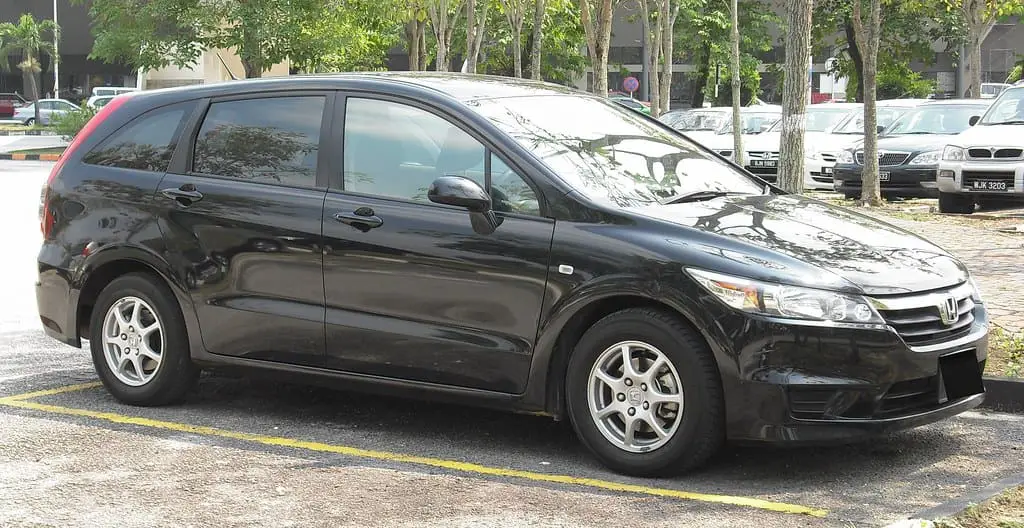The automotive industry has revolutionized. There are various options in every segment.
Every company has launched numerous models to cater to a wide range of customers. The most common range is compact MPV models, which can be used for commercial as well as private purposes.
The two common cars in that segment are Toyota Wish and Honda Stream.
Key Takeaways
- Toyota Wish and Honda Stream are compact MPVs designed for families, offering versatile seating configurations.
- Toyota Wish provides a comfortable ride with its smooth suspension system and efficient fuel consumption.
- Honda Stream stands out with its sporty design and agile handling, delivering a more engaging driving experience.
Toyota Wish vs Honda Stream
Toyota Wish is a compact vehicle designed to be a versatile and practical vehicle that can accommodate a range of uses, including family transportation and commercial purposes. Honda Stream is a compact vehicle designed to be a practical and versatile vehicle. It also has a spacious interior.

Toyota Wish is available in two engine options. The transmission is available in 2WD and 4WD.
The engine of Toyota Wish produces an output of power 105 kW. Toyota Wish has a sporty look.
On the other hand, Honda Stream is also available in two engine options – 1.8 L and 2.0 L. The transmission of the Honda Stream is of 5-speed automatic and 5-speed manual CVT.
The engine of Honda Stream produces an output of power 115 kW at 6500 rpm.
Comparison Table
| Parameters of Comparison | Toyota Wish | Honda Stream |
|---|---|---|
| Engine | The engine does 97 kW at 6000 rpm and 170 Nm at 4200 rpm | The engine does 103 kW at 6300 rpm and 174 Nm at 4300 rpm |
| Automatic transmission | Toyota Wish has a 4-speed automatic transmission | Honda Stream has a 5-speed automatic transmission |
| Internal space | The internal width is 800 mm | The internal width is 990 mm and hence is more spacious |
| Fuel consumption. | 16.0 km/L | 13.2 km/L |
| Key features | Toyota Wish has 6 SRS Airbags, Engine braking, ABS, Automatic, and S-VSC | Honda Stream has ABS barking assistance, pedestrian detection system, electronic stability control, SRS airbags, pre-crash safety system, and other features |
What is Toyota Wish?
Toyota Wish was launched in the market by Toyota in 2003. It gained popularity as it was a versatile and adaptable model.
It was used for commercial as well as private purposes. It is a compact MPV.
Toyota Wish is available in six as well as seven-seater models. In parts of Japan. Toyota Wish is available as Toyota NETZ.
The body style of the Toyota Wish is a 5-door station wagon. The layout of the body contains a front engine and a front-wheel drive.
Toyota Wish was most sold in the places like Thailand, Taiwan, Hong Kong, Malaysia, Singapore, and Japan. Toyota Wish was launched in two generations – the first generation is AE10 2003, and the second is AE20 2009.
The engine of Toyota Wish is powerful as it is 1.8 L – 2.0L. The second-generation engines were powered by Toyota’s Dual VVT-i 2ZR-FAE and 3ZR-FAE.
The transmission is available in 4-speed automatic and 7-speed super CVT-i. The wheelbase of the model is 108.3 inches, the length of 180.7 inches, the width of 66.7 inches, and the height is 62.6 inches.
The curb weight of the model is 1355 – 1380 kg. The dimensions of both generations are similar.
There were updates in 2012 that introduced the facelifted model. These brought changes in the rear lamps, headlights, revised front grille, featured LED lights, dashboard meter, and tailgate garnish.
The models have various safety features like ABS, END, and BA.

What is Honda Stream?
Honda launched Honda Stream in the year 2000. It is a compact MPV.
The body style of the Honda Stream is of the 5-door station wagon. The body layout of the model contains a front engine and a front-wheel drive.
The authorized distributors and importers sell the Honda Stream model. Honda Stream was launched in two generations – the first was RN 1-5 2000, and the second was RN6-9 2006.
It is available in both 5-speed automatic and 5-speed manual CVT. The dimensions of the exterior of the Honda Stream are a wheelbase of 107.9 inches, a length of 180.1 inches, a width of 66.7 inches, and a height of 60.6 inches.
The curb weight of the model is 1358 kg. The second generation of Honda Stream further has two specifications – lower-end features of a 1.8 L SOHC i-VTEC engine with a 5-speed automatic gearbox and higher-end features of a 2.0 L SOHC i-VTEC engine.
The models have a 7-speed paddle shift, FWD, firm damping shock absorbers, and an anti-roll and sway bar for the rear setup. Honda Stream was popular in the market till 2014.
Several other models, like Honda Jade and Honda Civic, replaced it. The engine of Honda Stream produces 140 PS at 6300 rpm and a torque of 174 Nm at 4300 rpm.
The Stream also launched a variant called RSZ to join the normal Stream.

Main Differences Between Toyota Wish and Honda Stream
- Toyota Wish was in production from 2009- 2017, while the Honda Stream was in production from 2006 – 2014.
- The fuel tank capacity of Toyota Wish is 60L, while the fuel tank capacity of Honda Stream is 55L.
- The fuel consumption of Toyota Wish is 16.0 km/L, while the fuel consumption of Honda Stream is 13.2 km/L.
- The cabin of the Toyota Wish has an elevated position for the driver, while the cabin of the Honda Wish does not offer any elevation in the driver’s seat.
- The cargo space of Toyota Wish is comparatively low and can accommodate low to medium luggage, while the cargo space of Honda Stream is roomy and can accommodate medium to large luggage.

The detailed descriptions of the Toyota Wish and Honda Stream provide a comprehensive understanding of their specifications. However, a comparison of their technology and entertainment features would further enhance the analysis of these models.
I agree, Ewalker. A comprehensive analysis of the technology and entertainment aspects would be beneficial for potential buyers to make well-informed decisions.
The in-depth insight into the technical aspects of Toyota Wish and Honda Stream is quite enlightening. The comparison table has efficiently outlined their differences, aiding in identifying the better fit for individual preferences.
Both these models offer a wide array of features and options for the drivers. The comparison table makes it clear the differences between them. The number of engine options and transmission styles should be an important factor for potential buyers.
Toyota Wish and Honda Stream seem to offer diverse features that cater to a wide range of needs. The detailed dimensions and safety features of both models provide a clear understanding of their suitability for different purposes.
The detailed analysis of Toyota Wish and Honda Stream’s dimensions and power specifications provide a comprehensive view of their performance. Understanding the technical aspects is essential for potential buyers.
Absolutely, Aking. Having clarity about the technical specifications enables informed decision-making and ensures the chosen model meets specific requirements.
Toyota Wish and Honda Stream are promising options for families and commercial uses. The detailed specifications provided in the article give a comprehensive overview to make an informed decision based on requirements.
The historical overview and details of the generations of Toyota Wish and Honda Stream offer a deep understanding of their evolution. It’s crucial to know the background to assess their development and advancements in subsequent models.
The comparison of Toyota Wish and Honda Stream’s fuel consumption and tank capacity are useful factors to consider for individuals looking for economical and efficient performance. Such detailed analysis aids in decision-making.